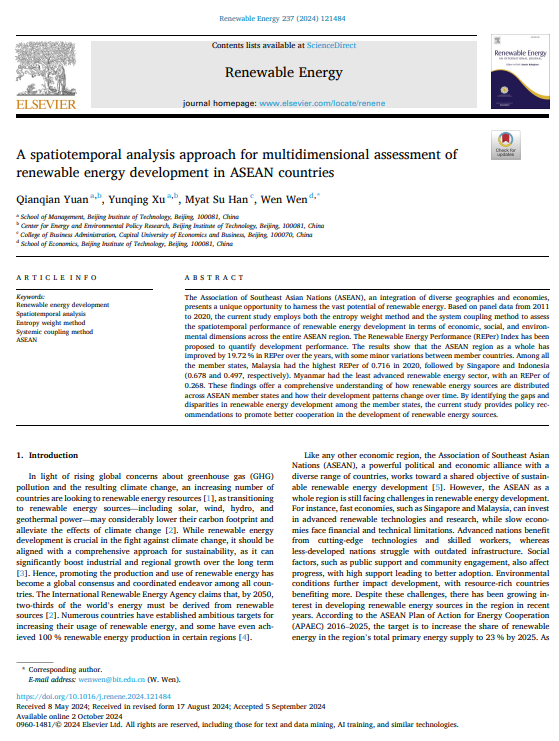
Author(s)
Andewi Rokhmawati, Vita Sarasi, Lailan Tawila Berampu
Publisher
Published Date
Access
DOI
The Association of Southeast Asian Nations (ASEAN), an integration of diverse geographies and economies, presents a unique opportunity to harness the vast potential of renewable energy. Based on panel data from 2011 to 2020, the current study employs both the entropy weight method and the system coupling method to assess the spatiotemporal performance of renewable energy development in terms of economic, social, and environmental dimensions across the entire ASEAN region. The Renewable Energy Performance (REPer) Index has been proposed to quantify development performance. The results show that the ASEAN region as a whole has improved by 19.72 % in REPer over the years, with some minor variations between member countries. Among all the member states, Malaysia had the highest REPer of 0.716 in 2020, followed by Singapore and Indonesia (0.678 and 0.497, respectively). Myanmar had the least advanced renewable energy sector, with an REPer of 0.268. These findings offer a comprehensive understanding of how renewable energy sources are distributed across ASEAN member states and how their development patterns change over time. By identifying the gaps and disparities in renewable energy development among the member states, the current study provides policy recommendations to promote better cooperation in the development of renewable energy sources.